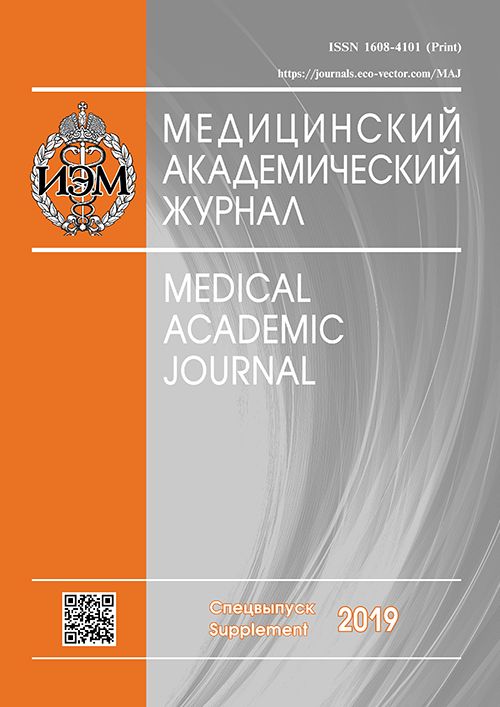NEUTROPHILS’ FUNCTIONAL STATE IN ALZHEIMER’S DISEASE
- Authors: Ivanov PA1, Shmakova AA1, Mikhailova NM1
-
Affiliations:
- Mental Health Research Center, Moscow
- Issue: Vol 19, No 1S (2019)
- Pages: 81-82
- Section: Articles
- Published: 15.12.2019
- URL: https://journals.eco-vector.com/MAJ/article/view/19336
- ID: 19336
Cite item
Abstract
Alzheimer’s disease (AD) is the most widespread neurodegenerative disease of older age, which is associated with the deposition of amyloid-beta polymerized peptide (consisting of 42 amino-acid residues) in the brain. The microglial phagocytosis disturbance, which is observed during AD, is possibly the key factor in the process. The research of neutrophils in patients with AD is of special interest due to the pressing problem of finding peripheral markers of AD. Analysis of neutrophils’ functional state in patients with AD is the objective of the present study. A reliable decrease of neutrophils’ phagocytic activity was established in group of patients with AD in comparison with control group (p < 0,05) (PI = 1.16 [0.64; 2.68] and PI = 2.34 [2.06; 2.85], respectively). A reliable increase of leukocytic elastase (LE) enzymatic activity (p < 0.05) was discovered in neutrophil lysate in AD group compared to control (LE = 0.43 [0.29; 0.77] and 0.29 [0.26; 0.38], respectively) at the same time. Comparison of PI and LE indicators in neutrophils’ lysate of AD group showed negative correlation between these parameters (r = 0.49, p < 0.05), which means that phagocytosis reduction during AD is accompanied by simultaneous LE activity increase in lysate of these cells.The obtained results allow to draw a conclusion that neutrophils’ phagocytic activity decreases during AD. Thus, discovered changes in neutrophils’ functional state can be considered as a potential peripheral AD marker.
Keywords
Full Text
About the authors
P A Ivanov
Mental Health Research Center, Moscow
A A Shmakova
Mental Health Research Center, Moscow
N M Mikhailova
Mental Health Research Center, Moscow
References
Supplementary files







